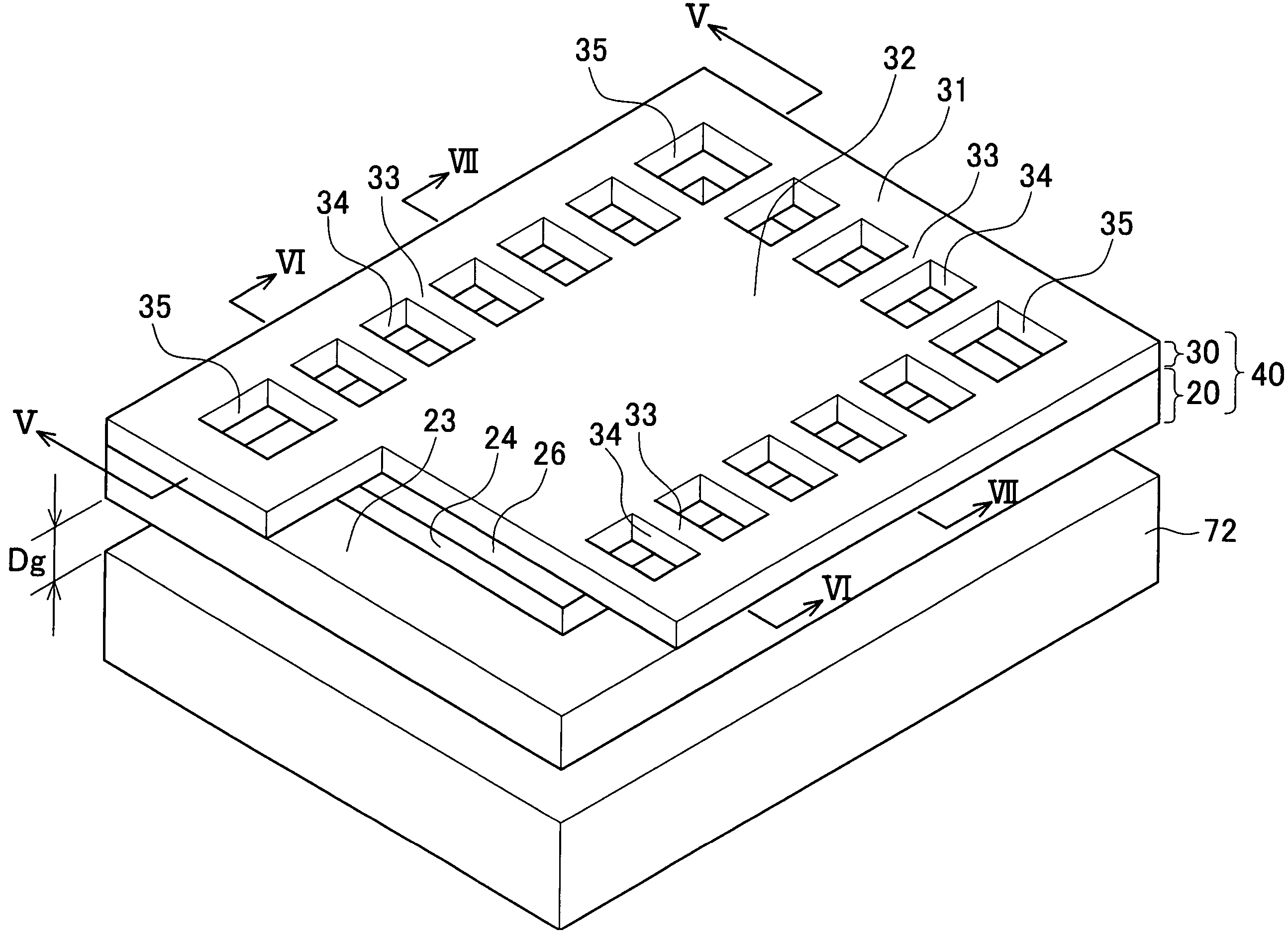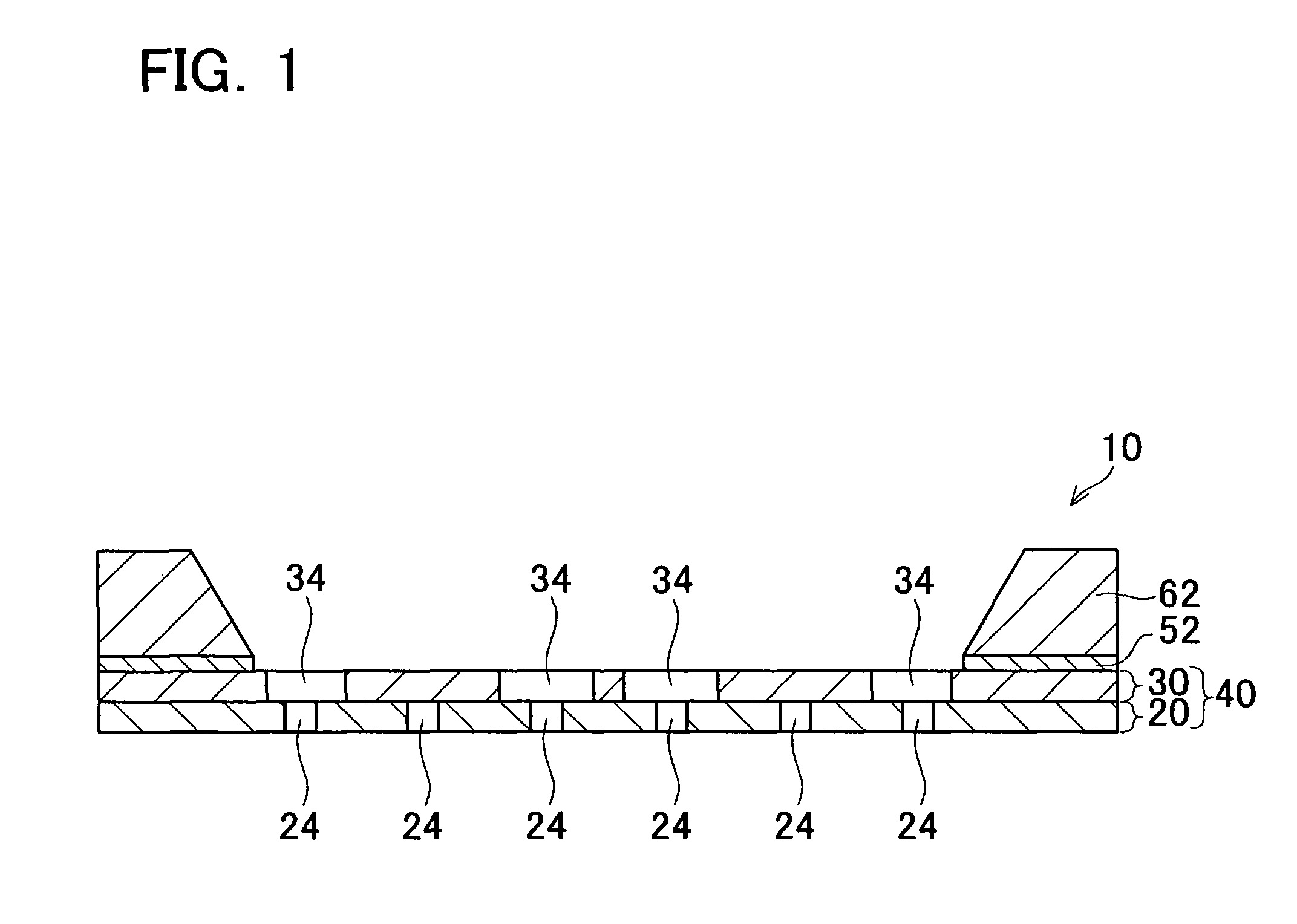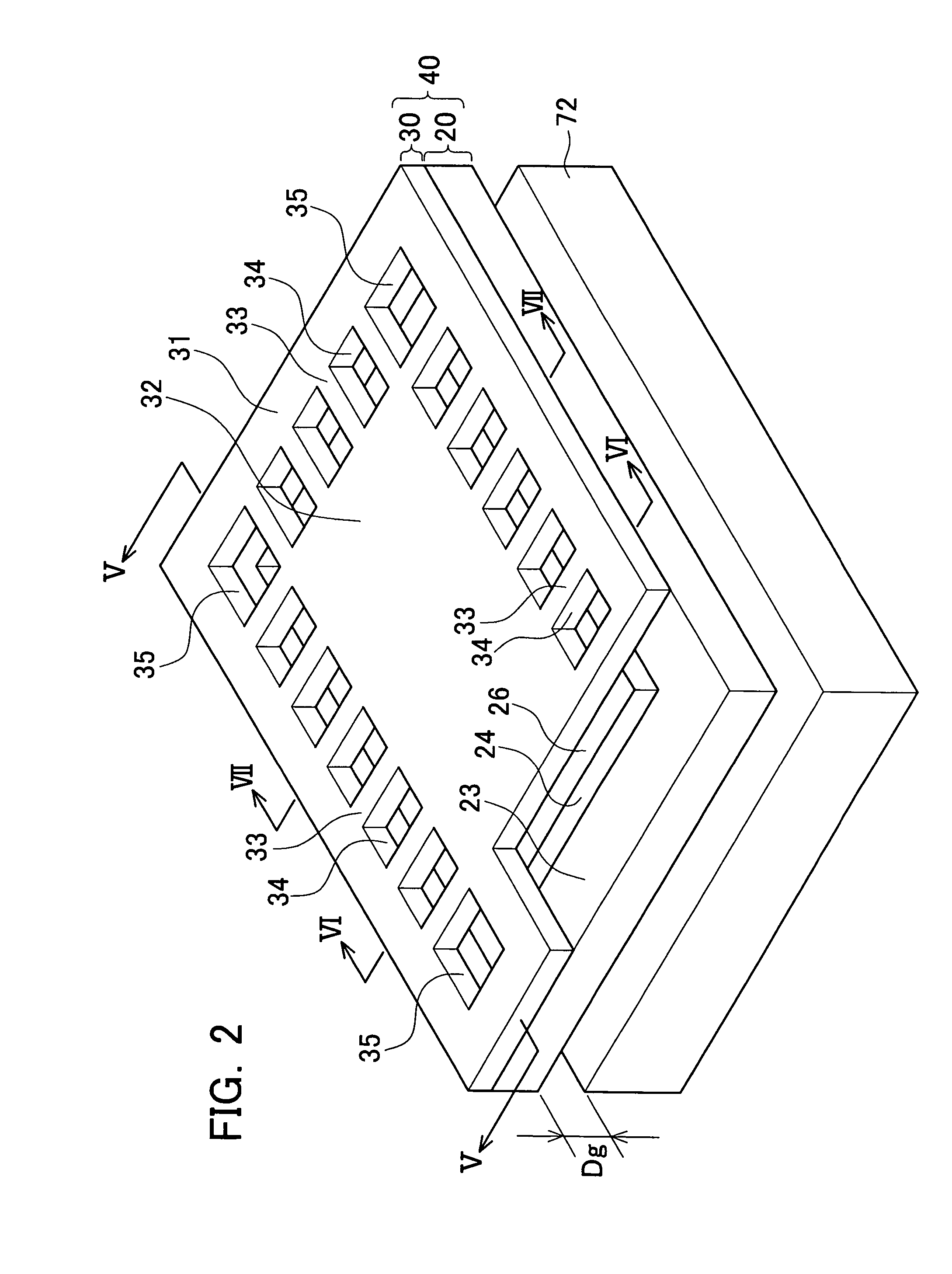Stencil masks, method of manufacturing stencil masks, and method of using stencil masks
a stencil mask and manufacturing method technology, applied in the field of stencil masks, can solve the problems of inability to accurately control the irradiation area, inability to use conventional stencil masks, uneven density of charged particles in the irradiation area, etc., and achieve the effect of convenient manufacturing, convenient manufacturing of stencil masks, and convenient use of semiconductor devices
- Summary
- Abstract
- Description
- Claims
- Application Information
AI Technical Summary
Benefits of technology
Problems solved by technology
Method used
Image
Examples
first embodiment
[0097]An embodiment of a stencil mask will be described below with reference to figures. A stencil mask of the present embodiment is used for limiting an irradiation area of ionized atoms to a predetermined shape on the surface of the semiconductor substrate and locally introducing ionized atoms into the semiconductor substrate. The area where the ionized atoms are introduced and the area where the ionized atoms are not introduced are controlled by the stencil mask. When the stencil mask of the present embodiment is utilized, it is possible to form the ion introducing area in a loop shape at the surface of the semiconductor substrate. Moreover, the ion introducing area is not restricted to being formed in a loop shape, but can be formed in various shapes by modifying the pattern of penetrating holes formed in the stencil mask.
[0098]A simple description of the figures will be given first. FIG. 1 is a longitudinal cross-sectional view schematically showing the basic configuration of a...
second embodiment
[0171]In the second embodiment, the method of utilizing a stencil mask to manufacture a semiconductor device having a switching function will be described. The semiconductor device of the present embodiment is a level shift circuit (an example of a compound device) in which a high potential circuit region and a low potential circuit region are formed in one semiconductor substrate. FIG. 37 schematically shows a plan view of a level shift circuit 1000.
[0172]The level shift circuit 1000 comprises a high potential circuit region 1012, a low potential circuit region 1011, and a mediating circuit region 1010 that connects the two. A semiconductor switching element that performs switching of high voltage power is formed in the high potential circuit region 1012. A control circuit for switching the semiconductor switching element ON and OFF, and that operates at low potential is formed in the low potential circuit region 1011. The high potential circuit region 1012, the low potential circu...
PUM
| Property | Measurement | Unit |
|---|---|---|
| thickness T20 | aaaaa | aaaaa |
| hole width W20 | aaaaa | aaaaa |
| aspect ratio | aaaaa | aaaaa |
Abstract
Description
Claims
Application Information
 Login to View More
Login to View More - R&D
- Intellectual Property
- Life Sciences
- Materials
- Tech Scout
- Unparalleled Data Quality
- Higher Quality Content
- 60% Fewer Hallucinations
Browse by: Latest US Patents, China's latest patents, Technical Efficacy Thesaurus, Application Domain, Technology Topic, Popular Technical Reports.
© 2025 PatSnap. All rights reserved.Legal|Privacy policy|Modern Slavery Act Transparency Statement|Sitemap|About US| Contact US: help@patsnap.com



